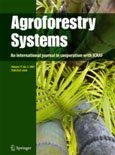To meet an ever global population's food demand, crop yields must be sustained and increased. Drought, which is getting harsher as a result of global warming, is largely impeding the agricultural productivity. Maize is widely used as food and animal feed in many regions of the world, but its yields are largely effected by drought and heat stress. Historical data on climate change predicts that drought and heat stress becoming major threat for maize cultivation in coming years, which will have huge impact on food security of the world especially in Africa and Asia. Thus there is an immense necessary to develop drought tolerant and climate resilient maize to feed the predicted population of the world. Availability and accessibility of crop genetic resources plays a huge role in development of drought-tolerant maize cultivars. A huge genetic resources of maize, including its landraces and crop wild relatives (CWR) have been reported naturally and many of them have stored in National and International gene banks globally. Conventional breeding methods have been tremendously increased maize yields, but these methods frequently fall short of achieving the demand for improved drought stress resistance. In this article, we have briefly discussed about impact of climate variability on crop production, maize yield losses due to drought, drought tolerance in maize landraces and CWR, and origin and evolution of Mexican landraces. This information may help in utilization of these potential resources in various pre-breeding programs.
DOI:
https://doi.org/10.20944/preprints202212.0210.v1
Altmetric score:
Dimensions Citation Count:
























